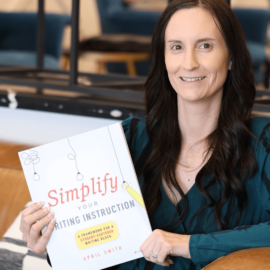Project-based learning is becoming increasingly popular because it’s an engaging and authentic learning experience for kids. If you’re new to project-based learning and looking to get started, check out the four things I think you absolutely have to have in your project-based learning planning template before you begin!
Don’t know a lot about project-based learning? Check out this blog post for information on the basics of project-based learning.
A real-life problem or scenario
The hardest part when starting PBL is coming up with a real-life problem or scenario to base your PBL around. When you’re out and about over the weekend, keep an eye out for problems or scenarios you experience that can relate to one or more of your standards. I’ve found that math and science is fairly easy to relate to real-life, and ELA & social studies can be easily incorporated into PBLs with those scenarios.
My favorite scenario of all time? That’s a hard one, but I REALLY love my scenarios that relate to business-building or family.
A well-laid-out plan
Planning is integral to successful project-based learning. The best PBLs begin with an organized game plan. I start by brainstorming how I’m going to use the topic and standards I’ve chosen to have students complete a project that includes all of the elements of PBL. I do this by writing it in my PBL planner and making sure my project-based learning planning template makes sense.
After I organize all of my ideas on the planning guide, I move on to pacing my lesson into individual days. I then get all of my materials together and create organizers for everything students will need to do during their projects.
I also have a plan for teaching procedures, critique & revision, and differentiation.
A flexible, but organized, classroom setup
Something that hinders teachers when they go to implement project-based learning is not knowing what to do with their classroom setup. Teachers either expect the setup to not have to change at all, or they give students way too much independence during PBL. It’s important to teach students some procedures, so that they can have the independence they need for in-depth inquiry, while ensuring that it’s not a complete free-for-all.
Some procedures I teach:
- How to collaborate with other students in an efficient manner
- How to get help
- How to use technology, supplies, and other resources
- Where they can complete independent work and what their workspace should look like
Support
It’s always better when you have other teachers in your corner to help you come up with ideas and solve problems. Team up with another teacher in your building that’s interested in trying project-based learning and set up a time every week to talk. It’s also a great idea to connect with other teachers online that are implementing PBL.
Good luck on your project-based learning journey! You will LOVE what it does for your classroom!

